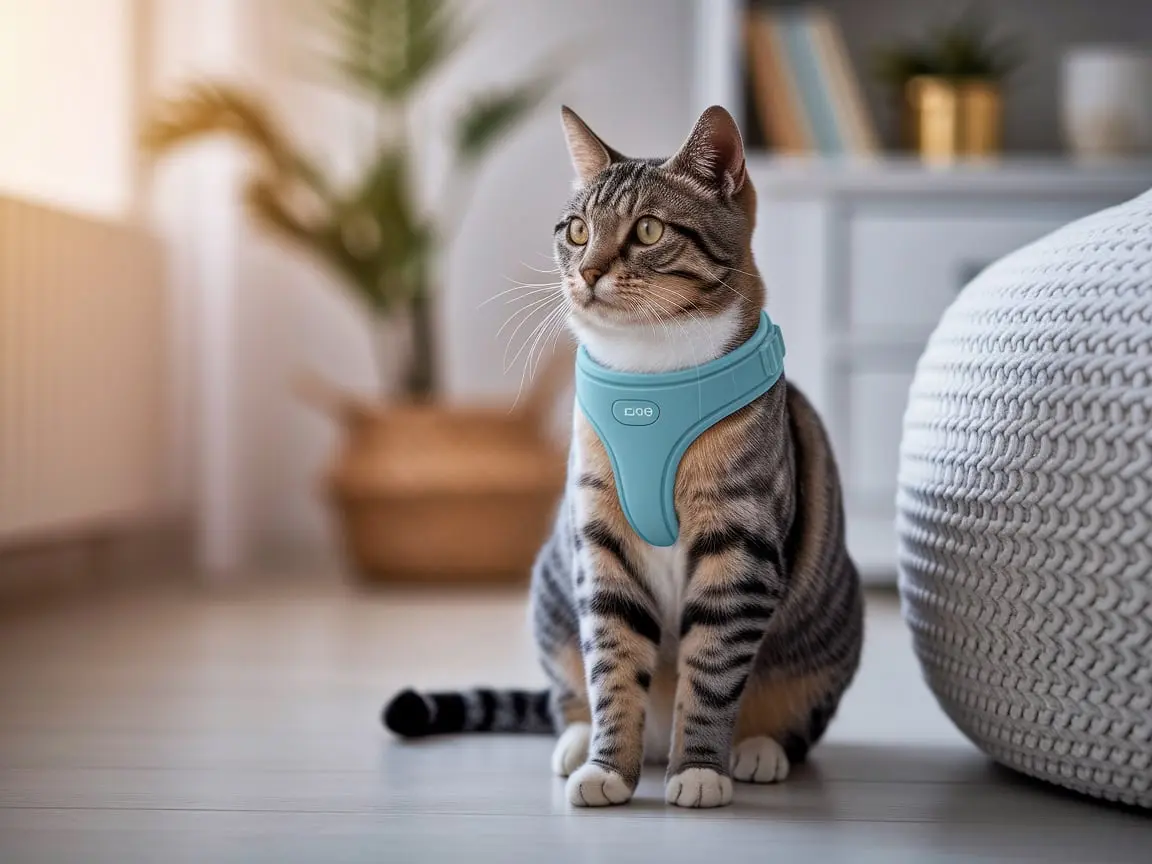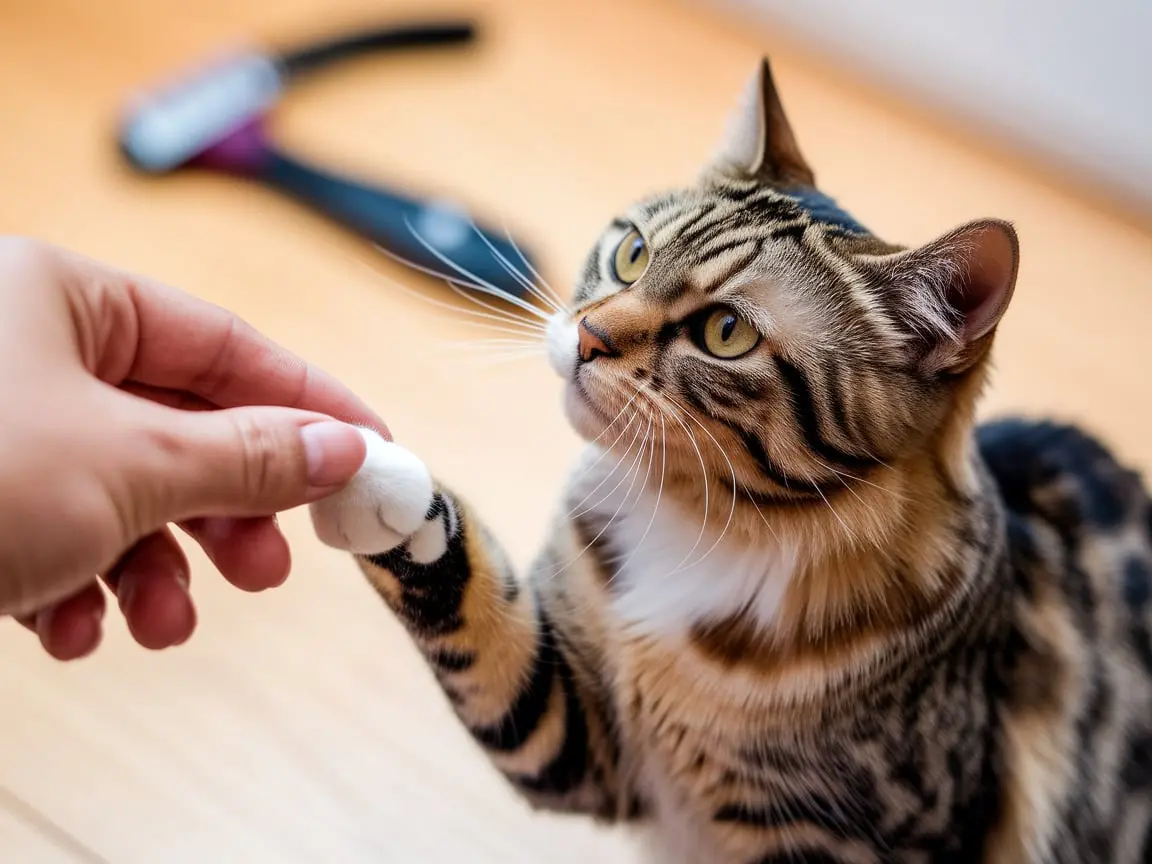Losing a beloved cat is every pet owner’s nightmare. Naturally, you want to make sure your feline friend can always find their way back to you. One common question that comes up is: “Can I track my cat with a microchip?”
The short answer is no — but that’s not the whole story. Let’s dive into what a cat microchip actually does, what it doesn’t do, and what you can do to truly track your cat’s movements.
What is a Cat Microchip (Really)?
A microchip is a tiny device – about the size of a grain of rice.
It’s implanted under your cat’s skin, between the shoulder blades.
Each chip has a unique ID number.
This number links to your contact info in a database.
Here’s how it’s supposed to work:
- Your cat gets lost.
- Someone finds them.
- They take your cat to a vet or shelter.
- The staff scans the chip.
- They call you and reunite you with your cat.
Sounds great, right?
Except…
You’re relying 100% on someone else to find your cat first.
And if your info isn’t up-to-date?
Game over.
Pro Tip: Always keep your microchip registration updated with your current phone number and address.
Can You Track Your Cat with a Microchip?
Short answer: No.
A microchip is NOT a GPS tracker.
It doesn’t send signals.
It doesn’t update location.
It doesn’t beep or flash.
It’s basically an invisible ID tag under your cat’s skin.
Useful if found…
But useless if you’re actually trying to find your cat.
And here’s the scary part:
- Over 2 million pets are stolen each year in the U.S. alone.
- 15% of cat owners lose their cat within 5 years.
- Over half of missing cats already had some kind of ID.
Bottom line: A microchip increases the chance you’ll get your cat back — but it’s no guarantee.
Why Microchips Are Still Worth It
Don’t get me wrong:
Microchips aren’t useless. Far from it.
Here’s what they’re good for:
- Proof of ownership (super important for disputes)
- Travel: Microchips are required for international cat travel (EU, UK, Australia, etc.)
- High-tech cat flaps and feeding stations (only open for your cat)
Plus: If your cat is ever found by animal control or a shelter, a microchip massively boosts the chance they’ll call you.
So yes: Get your cat microchipped.
But don’t stop there.
Why You Also Need a GPS Tracker for Your Cat
Imagine this:
Your indoor cat sneaks outside.
You panic.
You call. You shake treats. Nothing.
Now what?
If your cat’s wearing a GPS tracker, you pull out your phone.
Open the app.
And boom — you see their location in real time.
It’s that easy.
Here’s what a GPS tracker gives you (that a microchip can’t):
- Real-time location tracking (over an unlimited range)
- Escape alerts if your cat leaves a safe zone
- Activity tracking (so you know if your cat’s roaming more than usual)
- Heat maps showing where your cat hangs out the most
Translation:
You’re not sitting around hoping someone finds your cat.
You’re actively tracking them down yourself.
Pro Tip: Look for a GPS tracker built specifically for cats (lightweight, waterproof, comfortable to wear).
Microchip vs GPS Tracker: Quick Comparison
| Feature | Microchip | GPS Tracker |
| Purpose | Identify your cat if found | Track your cat’s location anytime |
| Real-Time Tracking | ❌ | ✅ |
| Needs Battery | ❌ | ✅ |
| Requires Strangers to Help | ✅ | ❌ |
| Works Worldwide | ✅ | ✅ |
| Upfront Cost | ~$85 | ~$50 |
| Ongoing Costs | None | Monthly subscription |
| Legal Requirement | In many countries | No |
Pro Tip: Many cat owners use both:
- Microchip = Passive safety net
- GPS Tracker = Active protection
Common Myths About Cat Microchips
Myth #1:
“My cat has a microchip, so I’ll always find them.”
Reality:
You’ll only get your cat back if someone finds them and scans the chip.
Myth #2:
“Microchips have GPS built in.”
Reality:
Nope. Zero GPS. Zero tracking. It’s just a stored ID number.
Myth #3:
“Collars with ID tags are enough.”
Reality:
Tags can fall off, fade, or get pulled off.
Microchips are permanent — but again, they don’t help you find your cat actively.
How to Set Up Maximum Safety for Your Cat
Step 1: Microchip your cat at your local vet.
Step 2: Register the chip and update your contact info.
Step 3: Get a high-quality cat GPS tracker.
Step 4: Set up a “safe zone” alert on the tracker app.
Step 5: Relax knowing you can track your cat anytime.
Bonus: Some GPS trackers even offer health monitoring, sleep tracking, and adventure history! (Pretty cool.). Just like choosing a reliable cat grooming service for your furry friend, investing in both a microchip and a GPS tracker is a smart choice for their safety.
Final Thoughts
If you love your cat — and I know you do — microchipping is just step one.
But if you truly want peace of mind?
Combine a microchip with a GPS tracker.
Because waiting for someone else to find your cat?
That’s risky.
Knowing where your cat is — anytime, anywhere?
That’s smart.





